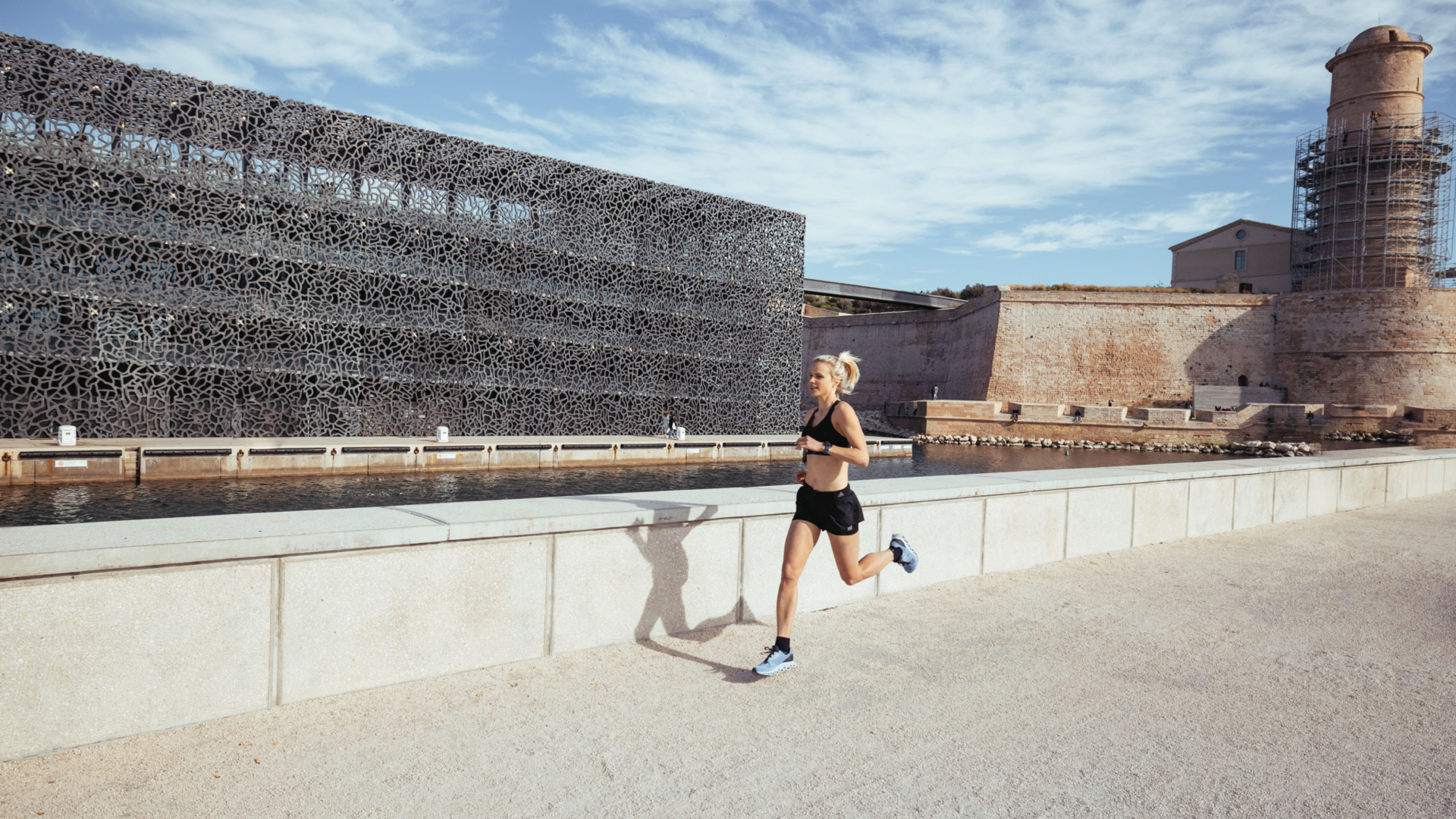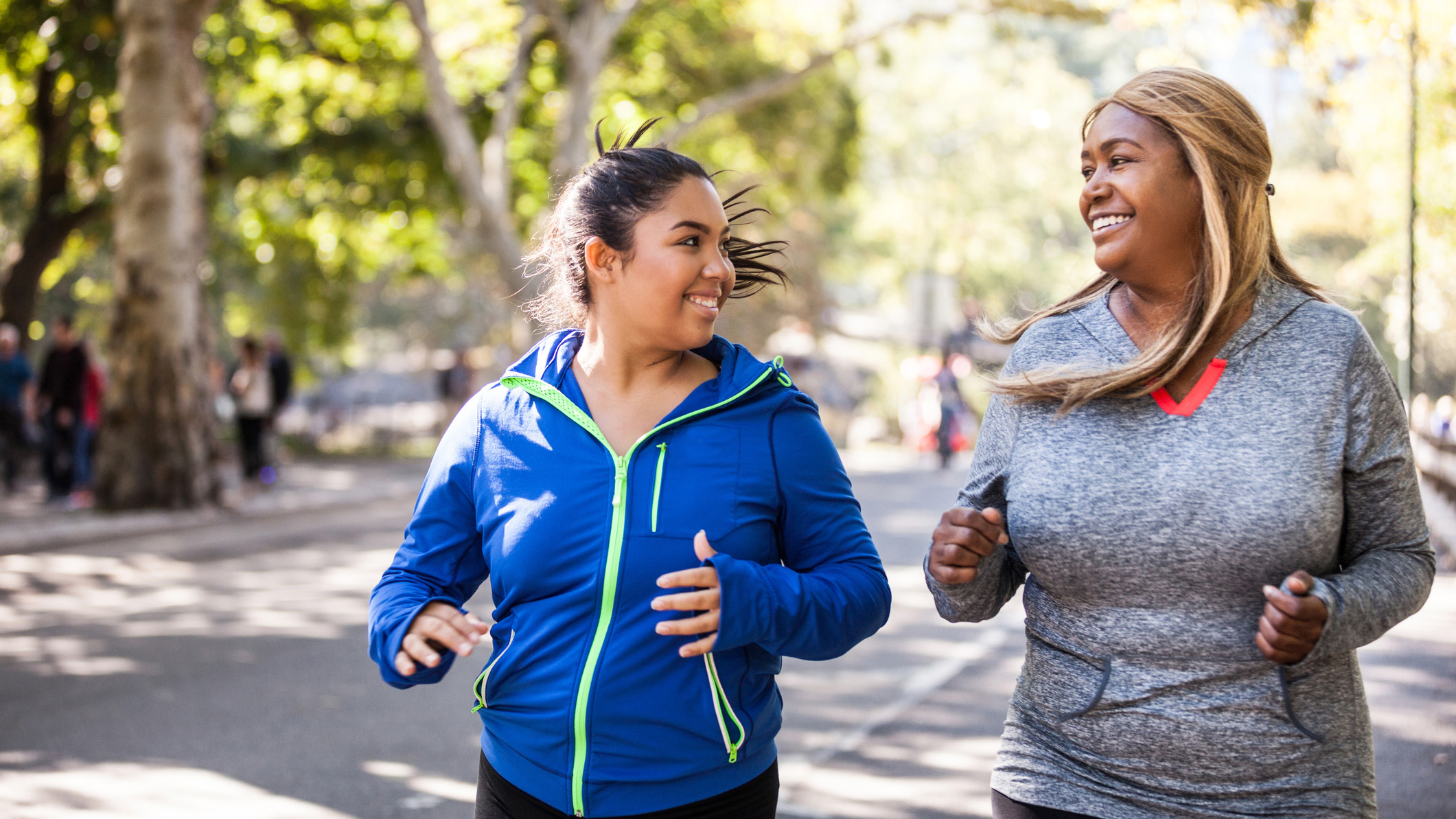

What are the different types of running? Running at the same pace all the time is great if you’re just getting out there to relax, socialise and/or enjoy a bit of headspace on your own. You can even make reasonable progress in the short term, but sooner or later, you will plateau or, at worst, get sick and injured if you push too hard.
Therefore, it is important to adopt a different approach for longevity with your running. Endurance coach and physio Tim Pigott from HP3 says, “If you’re aiming to beat a PB over 5k or 10k, feel strong over a long-distance race like a marathon or ultra, you need to incorporate some different types of running session into your week.”
Speaking of 5k runs; we have five tips on how to run a faster 5k from running semi-pro Ben Felton. We even have advice on how to exercise with your dog if that's something you might be interested in. From a gear point of view, you definitely need a decent pair of running shoes (best running shoes) and maybe a running watch (best running watches) to track and monitor performance over time.
without further ado, here are Tim’s eight different running sessions that you stand to benefit from.
1. Steady/ Easy/ Base run
You may have heard about the 80-20 rule, where 80% of your training should be easy; now, this isn’t quite correct for peak performance, however, the general principle still stands.
Easy means in Perceived Exertion (PE) zones 1-2 (out of 10), where you can hold a conversation very comfortably, and you don’t feel broken after the run or working hard in PE zones 4-5 where you can hardly talk for the intense effort you’re putting in. Too many people run in between these paces on most of their runs (zone 3), not pushing themselves fully and not running slow enough to build their aerobic fitness efficiently.
Work out what 80% of your training looks like and run it at a leisurely chatting pace to build up your aerobic fitness and endurance without tiring yourself out and heading towards burnout and injury. You might find you actually need to run quite a bit slower than usual, most of the time!
Sign up to the T3 newsletter for smarter living straight to your inbox
Get all the latest news, reviews, deals and buying guides on gorgeous tech, home and active products from the T3 experts
Hurrah! Use this run to focus on your form, chat with friends, practice navigating and finding new routes, and enjoy it.

2. Long run
Depending on the distance you’re training for, the long run is relative, but during the week, there is usually one long run which may be up to 50% of your total weekly volume, but don’t let it be longer than that to reduce your risk of injury.
This run should be done at an easy pace at which you can comfortably hold a conversation, and it should replicate your race terrain as much as possible. Hilly trail race – head for the hilly trails; road marathon – hit the pavements and pound away. This is also the time to practice with the race kit, navigating and eating on the move.
Remember, no new kit/fuel on race day!
3. Strides
A couple of times a week, at the end of an easy run, practise a quicker leg turnover with a 4-6 x 15–20-second surges of speed followed by a walk back to your start point. Known as strides, these are not quite a flat-out sprint but are at a pace you can only maintain for a short time. Strides strengthen your leg muscles and get them used to moving faster without overly taxing your heart and lungs.

4. Short Intervals/ Hill reps
Short intervals involve running as fast for a short time, starting with 30, 60 or 90 seconds, building towards 2-3 minutes as you get stronger, often requiring 2-3 minutes of recovery between each effort. These are then repeated a number of times.
Also known as hill reps if performed on a slope, one interval session per week will make your heart, lungs and legs super strong. New to intervals? Warm up with 2 miles of easy jogging, then try a couple of 30-second efforts - note where you get to and aim for the same place each time.
For the hilly version, jog for a couple of miles to the base of a small, runnable incline (this could be a bridge or subway if you don’t have natural hills nearby) and do the intervals up the hill, jogging back down to recover. Build up to doing 6-8 x 60 seconds once a week and do it with a group for friendly competition and fun.
5. Tempo/ Threshold run
Great for improving your speed endurance, tempo and threshold runs should be ‘comfortably hard’ – at the fastest pace you can comfortably maintain for the allotted time. This is around your fastest 5k or 10k race pace where you can only gasp the odd short sentence out. Swap your interval session for a tempo run every other week to keep things fresh.
Warm up with 2 miles of easy jogging, then run for 5 minutes at a 5-10k race pace. Then run a further 2-3 miles at a leisurely pace, and increase the effort to a maximum of 20-30 minutes. Giving your all at the park run is an excellent place to do your tempo run.

6. Progression run
A progression run is like easing into a tempo run; you start slowly and end up running at your hardest sustainable effort. This is a good 20-30 minute session to replace intervals or the tempo run to mix up your training. You can also add a progression block or two of harder paced running for 10-15 mins into the middle or near the end of your long run.
7. Fartlek
This Swedish term means ‘speed play’ – here, you tap into your inner child and just have fun on your run, larking about at different speeds based on how you feel. So it’s a nice alternative to the interval training session above but much less structured and made up as you go.
You might sprint to a lamppost, jog to the next tree, hurtle to the top of a small hillock and leap over a brook. You might then run through a woodland section, jump over a log, stand on a bench, and take in the views. You can also do this as a group session, taking turns to follow the leader.

8. ‘Recovery’ run
Rest is a vital part of training and overlooked by so many runners. This is when your body adapts to your progressively harder training load. If you train too hard and too often without allowing your muscles and joints to recover, eventually, it will catch up with you, and your progress will falter.
"With my athletes, we program a ‘Shinrin Yoku’ or ‘Kosetur’ day, which translates as Nature therapy/forest bathing or joyride and simply run for the love of it", says Tim, "Leave your watch at home and enjoy being in nature for this run. And always do a very easy run, walk or total rest day after long or hard sessions and races."

Claire Maxted is the co-founder and former editor of Trail Running magazine and the author of The Ultimate Trail Running Handbook. She currently runs the YouTube channel Wild Ginger Trail & Ultra Running, creating films packed with trail and ultra running advice, athlete interviews, gear tests and race recces. She hosts talks and awards and speaks at events and races.
-
 Build unshakeable core strength with a kettlebell and these three exercises
Build unshakeable core strength with a kettlebell and these three exercisesAdd this to the end of your workout to fire up your midsection muscles
By Bryony Firth-Bernard Published
-
 The next big tech battlefield is AR Glasses – and Apple is ready to fight
The next big tech battlefield is AR Glasses – and Apple is ready to fightTim Cook is said to "care about nothing else"
By Sam Cross Published